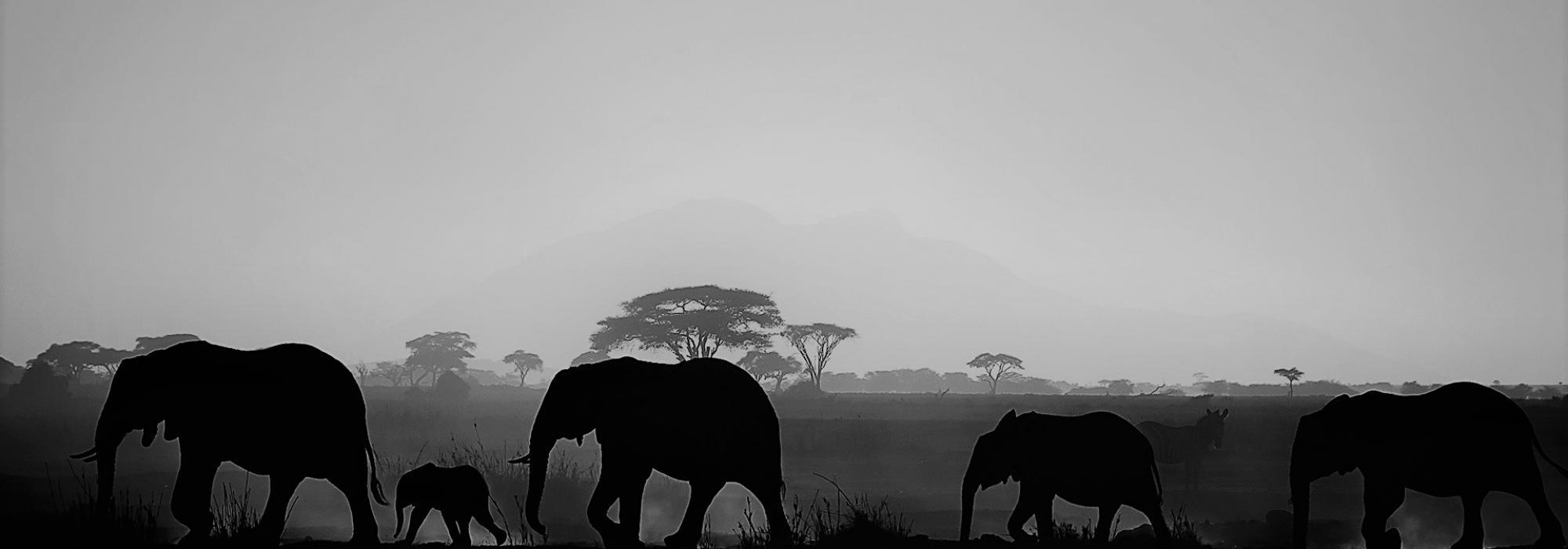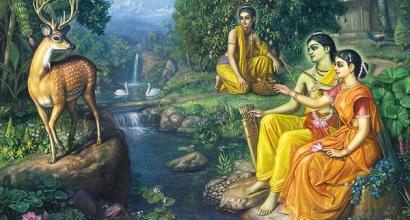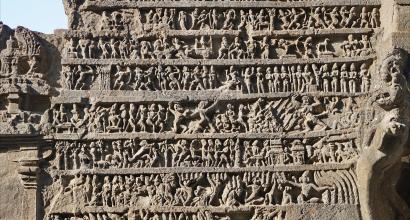It is hard to say when and where Śūdraka was born. The following verses that occur at the beginning of his play, the Mṛcchakaṭika, provide us with some details about the playwright –
Dviradendra-gatiścakora-netraḥ pari-pūrṇendu-mukhaḥ suvigrahaśca |
Dvija-mukhyatamaḥ kavirbabhūva prathitaḥ śūdraka ityagādha-sattvaḥ ||
ṛg-vedaṃ sāma-vedaṃ gaṇitam-atha kalāṃ vaiśikiṃ hasti-śikṣāṃ
jñātvā śarva-prasādād-vyapagata-timire cakṣuṣī copalabhya |
rājānaṃ vīkṣya putraṃ parama-samudayenāśvamedhena ceṣṭvā
labdhvā cāyuḥ śatābdaṃ daśa-dina-sahitaṃ śūdrako'gniṃ praviṣṭaḥ ||
samara-vyasanī pramāda-śūnyaḥ kakudaṃ veda-vidāṃ tapodhanaśca |
paravāraṇa-bāhu-yuddha-lubdhaḥ kṣiti-pālaḥ kila śūdrako babhūva ||
[There lived a handsome, capable and powerful king called Śūdraka (dvija-mukhyatama). He was well-versed in Ṛg-veda, Sāma-veda, gaṇita (mathematics), kāma-śāstra[1], and gaja-śāstra[2]; with the blessings of Bhagavān Śiva, he regained his lost sight, got his son crowned, performed aśva-medha, lived for a hundred years and ten days and then entered fire. He was fond of war. He desired to fight elephants; he was a śrotriya, tapasvī, and a wise human.]
These verses are quite strange, especially the part which says Śūdraka entered fire after living for a hundred years and ten days. Let alone the detail that the poet lived for a hundred years; the fact that the prastāvanā mentions the passing of the poet is rather unusual; who would write about the death of the poet right at the beginning of his work? It is possible that Śūdraka composed the play and after he passed away, the introductory segment, i.e., the prastāvanā must have been added by someone else, thereafter. It is also possible that the play was written by a playwright who was patronised by a king named Śūdraka; however, we do not have any proof to arrive at this conclusion. Moreover, we do not have enough material to establish if a person called Śūdraka actually existed or if he was an imaginary person conceived by a different poet. We do not find the mention of a king called Śūdraka either in inscriptions or on coins. The ancient purāṇas and a couple of other literary works[3] make passing references to his name; therefore, it seems quite possible that a king called Śūdraka[4] actually lived. Nevertheless, we can’t gather any information about where and when he lived.
Just as it is difficult to tell anything with certainty about the composer of the play, it is difficult to arrive at an estimate about the period in which he lived. From the references the play makes to the ātma-homa, the author of the caurya-śāstra, Indradhvajotsava (performed by Dhūtādevī), Ratna-ṣaṣṭhī upavāsa, four kinds of examination, principles of the Manu-smṛti, etc, one can try to derive a rough estimate of the period of its composition; additionally, the play includes segments which portray sleep and murder which, as per Bharata’s Nāṭya-śāstra, should not be displayed on the stage. There are technical terms connected with gambling and also terms which are not regularly in use; pāyaśa-piṇḍalaka, gaddahī, śattī, kaṇṇāṭa-kalaha, vaiśikī, and varaṇḍalabua are among such terms; from the story of the play, we see that the Buddhist tradition was deeprooted and people had good regard for their tradition as well. We also see that a brāhmaṇa man could marry a śūdra lady during the times of the play. From these elements, we can say that the play is ancient.[5]
Many Western scholars, upon discovering the Mṛcchakaṭika, have declared this to be the ancient-most of the Sanskrit dramas. However, of late, it has been established that Aśvaghoṣa is the earliest known playwright and that Bhāsa lived after him; it is likely that the Mṛcchakaṭika is based on Bhāsa’s Cārudatta.[6] The Prakrits used in the Mṛcchakaṭika appear to be older than those used by Kālidāsa in his plays. Therefore, we can roughly say that Śūdraka lived between the times of Bhāsa and Kālidāsa, and thus, around the fourth or fifth century CE. Rājaśekhara tells us that Rāmila and Somila had authored a Śūdraka-kathā – The Story of Śūdraka.[7] If the Somila mentioned by Rājaśekhara is the same as the poet quoted by Kālidāsa in his Mālavikāgnimitra and if the author of the Mṛcchakaṭika is the subject of his story, then it is clear that Śūdraka lived before Kālidāsa. The Pañcatantra contains segments which loosely capture the story of the third and fourth acts of the Mṛcchakaṭika. Keith, Winternitz and other scholars say that the Pañcatantra got its current form in about the fourth or fifth century CE. These work as supporting arguments to establish the period of composition of the Mṛcchakaṭika.
Based on the language of the play, Andrzej Gawronski comes to the conclusion that the play belongs to the fourth century CE. Jacobi also says that the play must have been composed before the fourth century CE and he bases his arguments upon the astrological elements that occur in the sixth act of the play. From the structure of the play, Richard Pischel surmises that the play must have been contemporary to Kālidāsa’s times. Winternitz, however, declares that any attempt at establishing the exact period of composition of the Mṛcchakaṭika is meaningless and he appears to be satisfied with the view that it was composed before Kālidāsa.[8] Thus, the opinions of many scholars converge upon the fourth or fifth century CE as the period of composition of the Mṛcchakaṭika.
To be continued ...
The current series of articles is an enlarged adaption of Prof. A. R. Krishnasastri's Kannada treatise Saṃskṛta-nāṭaka. They are presented along with additional information and footnotes by Arjun Bharadwaj.
[1] The branch of Indian sciences that deals with desires, their fulfilment, and enjoyment; the treatise includes segments connected with audio and visual arts.
[2] The lore of elephant training
[3] Rāja-taraṅgiṇī iii.343; Skānda-purāṇa – Wilson, Workds, IX – 194; Vetāla-pañcaviṃśati, Kathā-sarit-sāgara, Kādambarī, Harṣa-carita, Daśakumāra-carita, Kāvyālaṅkāra-sūtra-vṛtti, etc
[4] Winternitz surmises that Śūdraka was probably his nickname and that he did not belong to the first two dvija varṇas, i.e., he was not a brāhmaṇa or a kṣattriya
[5] K.C. Mehendale: Bhandarkar Commemoration Vol. p.368
[6] Numerous studies have been carried out in connection with Mṛcchakaṭika and Cārudatta; many scholars are of the opinion that Cārudatta formed the basis for Mṛcchakaṭika and we have accepted the view here. (cf. V.S. Sukthankar, J.A.O.S., vol. 42, pp. 59-74)
[7] R.G. Bhandarkar’s Report on the Search for Skt. MSS, 1887-91. p.x
[8] G.I.L, iii, 203 and Note 2














































